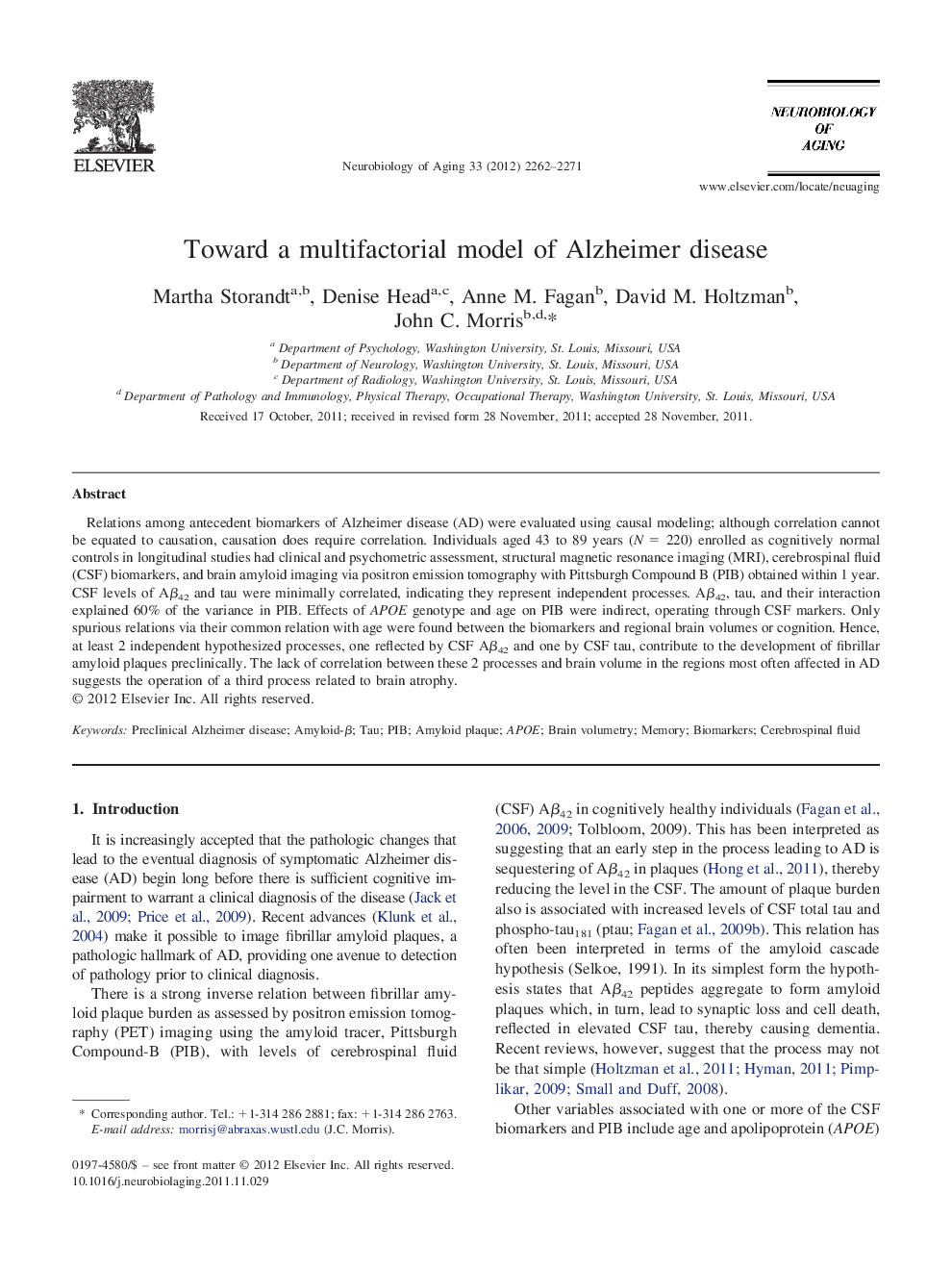| Article ID | Journal | Published Year | Pages | File Type |
|---|---|---|---|---|
| 6808111 | Neurobiology of Aging | 2012 | 10 Pages |
Abstract
Relations among antecedent biomarkers of Alzheimer disease (AD) were evaluated using causal modeling; although correlation cannot be equated to causation, causation does require correlation. Individuals aged 43 to 89 years (N = 220) enrolled as cognitively normal controls in longitudinal studies had clinical and psychometric assessment, structural magnetic resonance imaging (MRI), cerebrospinal fluid (CSF) biomarkers, and brain amyloid imaging via positron emission tomography with Pittsburgh Compound B (PIB) obtained within 1 year. CSF levels of Aβ42 and tau were minimally correlated, indicating they represent independent processes. Aβ42, tau, and their interaction explained 60% of the variance in PIB. Effects of APOE genotype and age on PIB were indirect, operating through CSF markers. Only spurious relations via their common relation with age were found between the biomarkers and regional brain volumes or cognition. Hence, at least 2 independent hypothesized processes, one reflected by CSF Aβ42 and one by CSF tau, contribute to the development of fibrillar amyloid plaques preclinically. The lack of correlation between these 2 processes and brain volume in the regions most often affected in AD suggests the operation of a third process related to brain atrophy.
Keywords
Related Topics
Life Sciences
Biochemistry, Genetics and Molecular Biology
Ageing
Authors
Martha Storandt, Denise Head, Anne M. Fagan, David M. Holtzman, John C. Morris,
